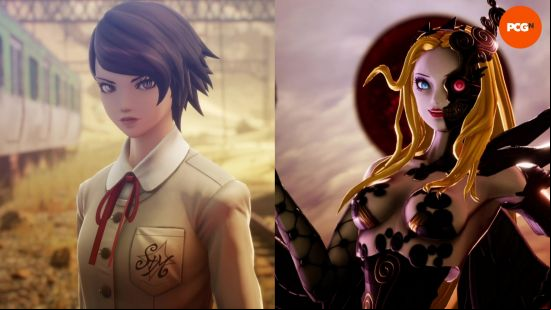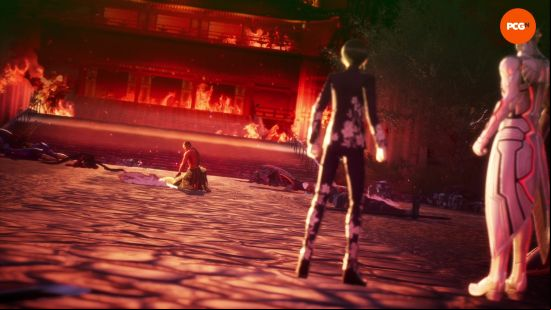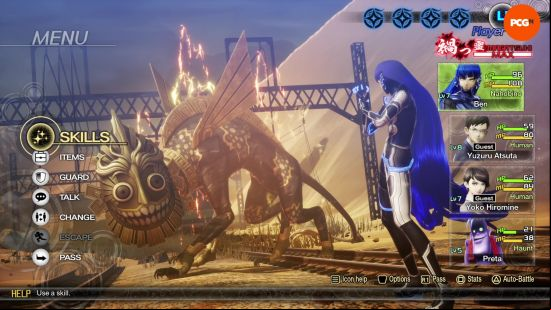Verdict
Offering a stunning visual upgrade, a great new story, and a hugely rewarding combat system, Shin Megami Tensei 5: Vengeance is officially the best and only way to play Atlus' beloved JRPG.
In November 2021, the Nintendo Switch saw the launch of Shin Megami Tensei 5 – the latest mainline entry in Atlus' JRPG series that led to the more widely known – and arguably more popular – Persona games. Despite positive reviews, the ambitious SMT 5 was inarguably held back by its launch platform of choice, with performance woes and other issues preventing it from earning the widespread mainstream recognition it deserved in line with its spinoff counterparts.
Almost three years later, Shin Megami Tensei 5: Vengeance is far more than just a visually enhanced and more technically stable version of the original release. An equivalent to the likes of Persona 4 Golden and Persona 5 Royal, Vengeance is an almost-perfect entry point to Shin Megami Tensei for both JRPG newcomers and longtime fans alike. All the while, veteran SMT 5 players can re-enjoy the original and experience something completely new all in one package – truly being the best of both worlds.

Vengeance shines brightest on two fronts: the massive visual and performance upgrades over the original, and the abundance of extra content in the new Canon of Vengeance storyline. At its core, SMT 5's story remains the same in Vengeance. You start as a young high schooler who suddenly gets transported to an alternative post-apocalyptic Tokyo overrun by demons. Before being slaughtered by its inhabitants, you're suddenly fused with the mysterious demon known as Aogami to become a Nahahino – a powerful god-like hybrid who can also recruit, summon, and control demons in the typical SMT/Persona fashion. Alongside allies old and new, you soon Bethel, a longstanding organization at the center of the ongoing war between angels and demons.
While newcomers and returning SMT 5 lovers can still choose to dig into the original version's tale and religious allegory, the namesake Canon of Vengeance offers an even better 50-70-hour campaign of its own. Including twists like the new accompanying human character, Yoko Hirmomine, and the antagonist demon foursome called the Qadištu, Vengeance quickly helps SMT 5 overcome its most notable weaknesses.

The original version's cast felt more cookie-cutter and in line with JRPGs of the past. In the Canon of Vengeance, however, not only do the Qadištu bring new life to otherwise unimportant scenes with engaging boss battles, but Hiromonie's personality, combat capabilities, and role in the group dynamic make key story moments play out in wildly different and more satisfying ways. When all's said and done, SMT 5 newcomers can still return to the original version here to see how differently things play out, meaning Vengeance offers two distinct alternate-reality adventures.
It's clear from the jump that Vengeance is the glow-up SMT 5 always needed. Watching the game's dramatic cutscenes, battles, and exploring Da'at in a high resolution at 60fps, it's impossible to conceive of going back to the original. With added gloss on the semi-realistic character models, metal surfaces, glistening waters, shimmering sands, and even the duller ruins of both Tokyo cities, SMT 5's presentation has come a long way.

You can also expect full controller , which works far better than mouse and keyboard when it comes to exploration. On the other hand, Vengeance's added quality-of-life features don't feel like they go far enough. While the new option to manually save at any time instead of just at fast travel points is cause for celebration, an autosave function would have granted greater peace of mind to those worried about losing progress to the game's toughest battles. Sadly, the demon recruitment mechanic can still be unnecessarily annoying if you enter negotiations with a full party, as you can only free up slots outside of battle.
What's more, the game's humble Switch origins remain fairly obvious in parts. Even when playing on a 16GB Razer gaming laptop, which is above recommended specs, you'll still see occasional instances of pop-in and frame rate drops. Nevertheless, whatever immersion breaks you might experience will be quickly forgotten thanks to this upgrade's added cinematic appeal.

No matter which story path you pick at the start of your playthrough, Vengeance's turn-based combat is just as satisfyingly difficult as ever without threatening to make you pull your hair out. Persona fans will have the easiest time adjusting thanks to the familiar creatures, items, and mechanics, but the tutorials will quickly help even Atlus newcomers find their way.
Keeping up the same comparison, the simplest way to describe SMT 5's combat is 'Persona on hard mode.' Along with grinding through side quests and experimenting with its affinity system to alter party skills and weaknesses, you're also encouraged to explore and platform around Da'at. If you neglect the game's warnings to prepare for powerful bosses, know that Vengeance isn't above one-hit-kill attacks that will blow your entire party away.
But by forcing you to consider and plan your builds, party composition, and strategy, the game makes every success feel all the greater – even more so when your fights are paired with an epic rock soundtrack and punctuated with wonderfully cinematic attacks. Ultimately, you'll come away from Vengeance feeling grateful for the depth of its systems and how they pushed you to become better. For all these reasons, this is officially the best and only way to play Atlus' beloved JRPG.
